Travel Talk holidays is a division dedicated to providing clients with the best options of
personal & business travel to discover the world crafted for you
Romance on the Dunes
Romance on the Dunes
Location: Delhi-Mandawa-Bikaner -Jaisalmer-Jodhpur-Udaipur-Pushkar-Jaipur- -Agra-Delhi
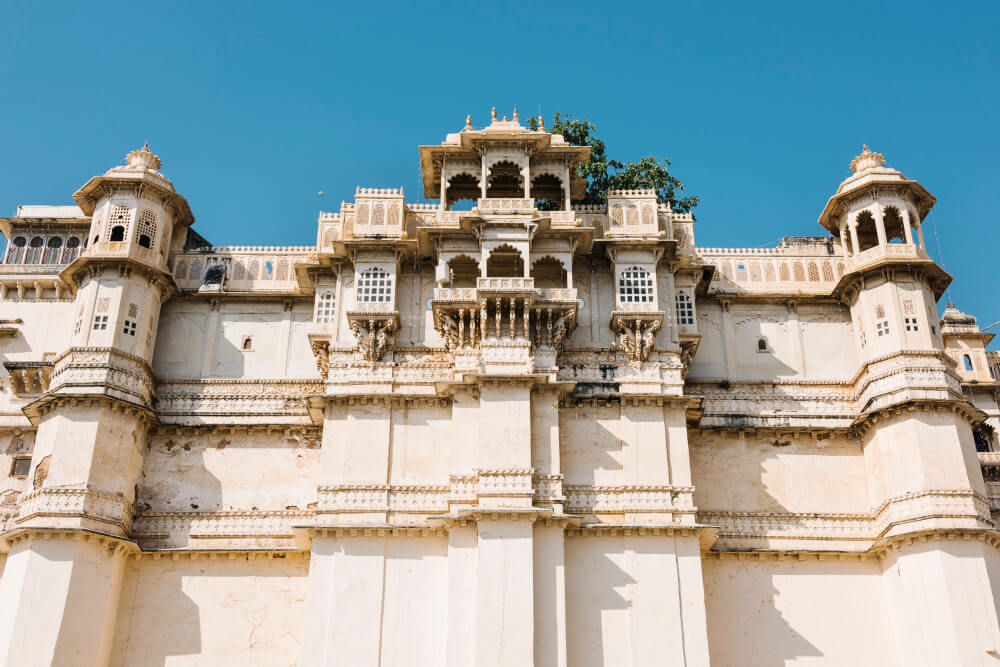
- Itinerary
- Map
Day 1
Arrival DelhiWelcome to New Delhi’s new International Airport
You will be met with a traditional Indian floral welcome by a local representative following customs, immigration formalities and baggage collection.
Delhi is a bustling metropolis, which successfully combines the ancient with the modern. Amidst the fast spiralling skyscrapers and flyovers, the remnants of a bygone time in the form of its many monuments stand as reminders to the region’s ancient legacy. The first impressions for any visitor travelling in from the airport is of a town in a hurry. Using your horn is de rigeur to warn of your presence. Cyclists, pedestrians and public transport stream down the main roads in a dance of organised disorder. It is quite simply a unique country so expect a unique experience.
Day 2
DelhiAfter buffet breakfast in the hotel you will proceed for the combined sightseeing tour of Delhi.
You will first visit Old Delhi. The tour will begin with a visit to Raj Ghat, a simple memorial to Mahatma Gandhi; drive past the Red Fort. The magnificent Red Fort, overlooking the river Jamuna was built during the years 1638 - 48 when the Mughal Empire was at its peak. The tour continues to Jama Masjid, one of Asia’s largest mosques and which is viewed from the outside. People stream in and out of the mosque continuously and the presence of a nearby bazaar means that the area is rarely quiet.

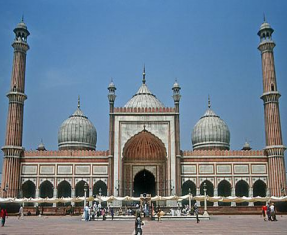
After visiting Old Delhi, you will be driven to New Delhi, which reflects the legacy the British left behind.
The tour to Imperial Delhi will include a visit to the Qutub Minar, which is the tallest stone tower in India. The Qutub Minar was started in 1199 AD by Qutub-ud-Din Aibak and completed by the sultan's successor and son-in-law, Iltutmish. The building is 72.5 m high and has 379 steps from the bottom to the top. The Minar is tapering with the diameter of the base is 14.3 m while at the top floor it is2.7 m. The Qutub Minar is still the highest stone tower as well as one of the finest Islamic structures ever raised in India. Then visit Humayun’s tomb, built by the widow of the second Mughal Emperor, Humayun, it is an outstanding monument in the Indo-Persian style, a precursor of the Taj Mahal. The tour also includes a drive past the imposing India Gate, the Parliament building and the Rashtrapati Bhawan, the President’s residence.
Overnight at the hotel.
Day 3
Delhi - Mandawa [surface: 272 Kms/ 6.5 Hrs]Your first day’s drive is to the stunning town of Mandawa, often described as Rajasthan’s open air art gallery. You stay at the magnificent Fort Mandawa, one of the finest conversions of an old fort into a hotel, in Rajasthan. The drive starts out easily enough before you turn off the highway and head through the fascinating countryside. There’s no rush, so take time to acclimatise yourself and get used to the driving style in India.


In the afternoon explore this beautiful havelis of Mandawa. The Rajput ruler of Mandawa built a fort in 1755 to protect this trading outpost that fell in the ancient caravan routes from China and Middle East. The township that grew around the fort attracted a large community of traders, who settled here. When the caravan traffic ceased in the late 18th century, the traders created business empires in other parts of the country, but returned to Mandawa build palatial mansions in their hometown. Mandawa is known for its colourful frescoes on a wide variety of subjects ranging from religious to the erotic; from copies of popular English prints to witty social satire rendered in the inimitable style of local artist. Every home here is adorned with gaily-painted murals that illuminate the arid landscape.
Day 4
Mandawa – Jodhpur [surface: 285 Kms / 07 Hrs.]Your journey continues through a great drive across the desert floor to the ‘Blue’ city of Jodhpur where you will stay in one of the most iconic heritage properties of Jodhpur. An oasis in the arid Thar Desert, Jodhpur is also the second largest city in the state of Rajasthan. Called the Blue City due to the colour of the houses, Jodhpur has a history that is rich and a present that beckons strongly to the discerning tourist.
You pass through Forts and palaces, temples and havelis, culture and tradition, spices and fabrics, colour and texture of Jodhpur. It not only offers tangibles, in terms of what you can see and buy but also fills one with a sense of history and the splendors of an era gone forever.
The hospitality of the locals, the colourful women, the striking turbans - all set against the searing desert is something to feel, not just see.
Situated in western Rajasthan, Jodhpur not only offers tangibles, in terms of what you can see and buy but also fills one with a sense of history and the splendors of an era gone forever. The hospitality of the locals, the demure women, the colourful turbans -all set against the unmerciful
desert is something to feel, not just see. Every pore of Jodhpur tells its own tales of heroic tales that made legends out of kings and soldiers, romances that continue to warm the heart and a time when epics were lived out on the streets by everyday man.
Upon arrival, check – in at the hotel. Rest of the evening is at leisure
Accommodation Types : Ajit Bhawan http://www.ajitbhawan.com/
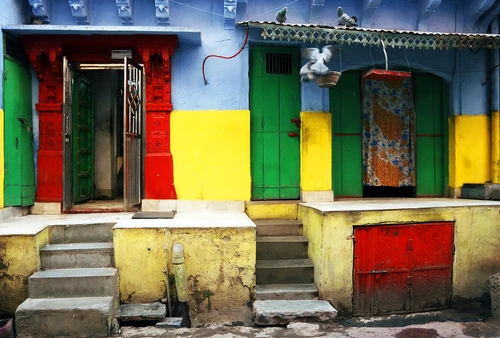
Day 5
JodhpurAfter breakfast visit the Mehrangarh Fort, considered one of finest in all India. This invincible stronghold of the Marwars sits on a steep hill lording over a wonderful view of its surroundings. Intricate latticed windows, elaborately carved panels and elegantly curved porches speak of beauty and taste. Here, the second largest cannon in Asia rests; the recoil of which requires an area as large as a football field! Also visit Jaswant Thada - a white marble memorial built in memory of Maharaja Jaswant II in 1899 who, as the story goes succumbed to injuries here while fighting the Mughal king, Jehangir.
After visit take a walking tour of Jodhpur city. The walk starts from Fateh Pole of Mehrangarh Fort and takes you through narrow alleys leading to quaint bazaars. One passes Brahmpuri where the blue houses of the Brahmins are located, Bazaars and finally the spice market.
The Jodhpur bazaars are treasure trove for shoppers. Jodhpur bazaars are teeming with an array of handicrafts. The walk ends at Sadar Bazaar which is a popular landmark with its Clock Tower.
Overnight at hotel.
Day 6
Jodhpur – Ranakpur – Udaipur [surface: 259 Kms / 06 Hrs.]Drive through valleys in the remote and peaceful Aravalli Range to RANAKPUR to visit one of the most important Jain temples in India. This marble complex is noted for the 29 halls supported by 1,444 pillars, each adorned with hundreds of carved figures, no two alike..


Continue driving to south, arriving Udaipur, described as the “City of Sunrise”.
Evening free to rest and relax. Overnight stay at hotel.
Day 7
UdaipurThe scenery is dramatic and ever changing as you travel through lakes, palaces in the most romantic city of Rajasthan, Udaipur. The city is replete with romantically named hilltop fortresses, such as the Monsoon Palace, exotic palaces with untold treasures and gripping legends of medieval chivalry and heroism. The French Impressionist painters, let alone the Brothers Grimm, would have loved this place and it’s not without justification that Udaipur has been called “the Venice of the East”. Take a tour of the City and visit the local museums and palaces or visit one of the outlying forts and get a birds-eye view of the town. Enjoy drinks or an evening meal on the Sunset Terrace
Day 8
Udaipur – Pushakar [surface: 285 Kms / 07 Hrs.]After breakfast in the hotel drive from Udaipur to Pushakar (285 Kms / 7 Hrs).


Pushakar lies on the edge of the desert. At its heart is one of India’s most sacred lakes. There are 52 ghats around the lake, and numerous temples. The Brahma temple, especially, attracts pilgrims all year round. Apart from its religious significance, Pushkar is known for its Cattle and Camel fair held every year in the month of Kartik (October/November), which attracts visitors in their thousands. You can also witness and participate in the evening prayer meetings in the temples. Being a religious town, alcohol and non-vegetarian food are taboo.
Evening free at leisure / own independent activities. Overnight at hotel.
Day 9
Pushkar – Jaipur [surface: 140 Kms / 03 Hrs.]After breakfast visit the Ghats and temples in the Holly City of Pushkar and later head off to Jaipur.
Jaipur's past is never too far from view. The city of victory, Jaipur presides over the fascinating desert state and its people. It is surrounded by rugged hills, each crowned by a formidable fort and beautiful palaces, mansions and gardens dotted throughout. The palaces and forts of yesteryear that were witness to royal processions and splendour are now living monuments, accepted quite naturally into the lifestyles of the people of the "pink city". Except for the busy traffic of bicycles, cars and buses, little seems to have changed.
Day 10
JaipurExplore the capital of Amber to see the fabulous Amber Palace.
Ride to the top on an elephant or go by jeep if you prefer. Once on top, stroll through the sprawling complex of courtyards and halls, many of the rooms have delightful wall paintings, with precious stones and mirrors inlaid in the walls. Most fascinating, perhaps, is the Sheesh Mahal (hall of mirrors) where a single lamplight is reflected in the many mirrors, lighting up the room.
En-route to Amber Palace you should visit the Palace of Winds, otherwise known as Hawa Mahal. It is really an elaborate facade behind which the ladies of the court used to watch the daily goings on in the street below. It is extremely intricate in its pink sandstone carvings. The cool wind blows through its facade of windows and latticed screens through which the queens of the court once viewed the street life of the city.
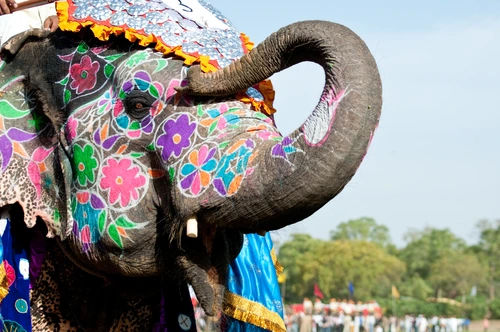

Afternoon, you will visit the City Palace, which is an overwhelming complex of exquisite palaces, gardens and courtyards, decorative art and carved doorways. The palace museum houses collections of rare manuscripts, armoury, costumes, carpets and miniature paintings.
Jaipur's Jantar Mantar is the most famous of five observatories built by Sawai Jai Singh in India. Jai Singh was a great admirer of progresses and research made in the fields of science and technology, but he was passionate about astronomy. There is a very interesting story behind the construction of this observatory, considered as the largest stone observatory in the world. Sawai Jai Singh sent his emissaries to all parts of the world before commencing the construction of this observatory. The emissaries returned with many manuals on astronomy containing cutting-edge technological information. One of these manuals was a copy of La Hire's "Tables". The king ordered the observatory to be built according to the details contained in this manual. When the construction ended, for the astonishment of the king and others, the observatory was 20 seconds more accurate than the one mentioned in "Table".
Overnight at the hotel.
Day 11
Jaipur– Agra [surface: 227 Kms / 06 Hrs.]Return to hotel for breakfast and later drive to Agra to witness the Monument of Love.
In the afternoon, visit Agra Fort – the seat and the stronghold of the Mughal Empire under successive generations. This was the seat of Mughal rule and administration and the present structure owes its origins to Akbar who erected the walls and gates and the first buildings on the eastern banks of Yamuna River. Shah Jehan added the impressive quarters and the mosque while Aurangzeb added the outer ramparts. Visit its Hall of Public Audience and its Royal Pavilions. In the evening, enjoy sunset tour of Taj Mahal.
In the afternoon, visit Agra Fort – the seat and the stronghold of the Mughal Empire under successive generations. This was the seat of Mughal rule and administration and the present structure owes its origins to Akbar who erected the walls and gates and the first buildings on the eastern banks of Yamuna River. Shah Jehan added the impressive quarters and the mosque while Aurangzeb added the outer ramparts. Visit its Hall of Public Audience and its Royal Pavilions. In the evening, enjoy sunset tour of Taj Mahal.
Day 12
Agra – Delhi [Surface: 205 Kms / 05 Hrs.]Spend your last day observing the beauty of Taj Mahal at dawn. Midway Tonga horse carriages will drop you at the ticket office and gates of the Taj Mahal. The Taj Mahal is everything that has been said about it and more. Taking 22 years and 20,000 men to build, the white marble was quarried 200 miles away and was transported to the site by a fleet of 1000 elephants.
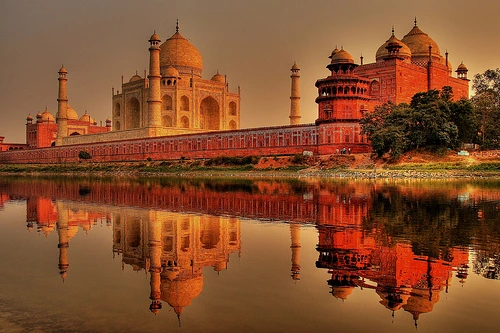
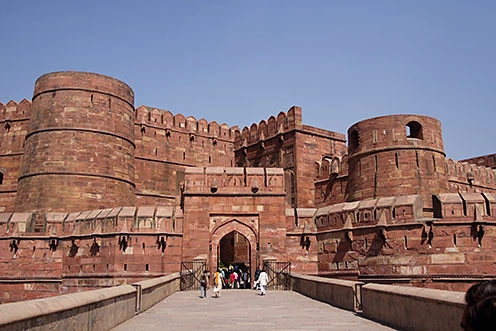
Return to your hotel for breakfast, then depending on your flight time you can go straight to Delhi or visit Agra Fort, which was the seat and the stronghold of the Mughal Empire under successive generations.
Farewell dinner at hotel or a venue outside the hotel.
Day 13
Leave DelhiIn time transfer to international airport to connect flight back home
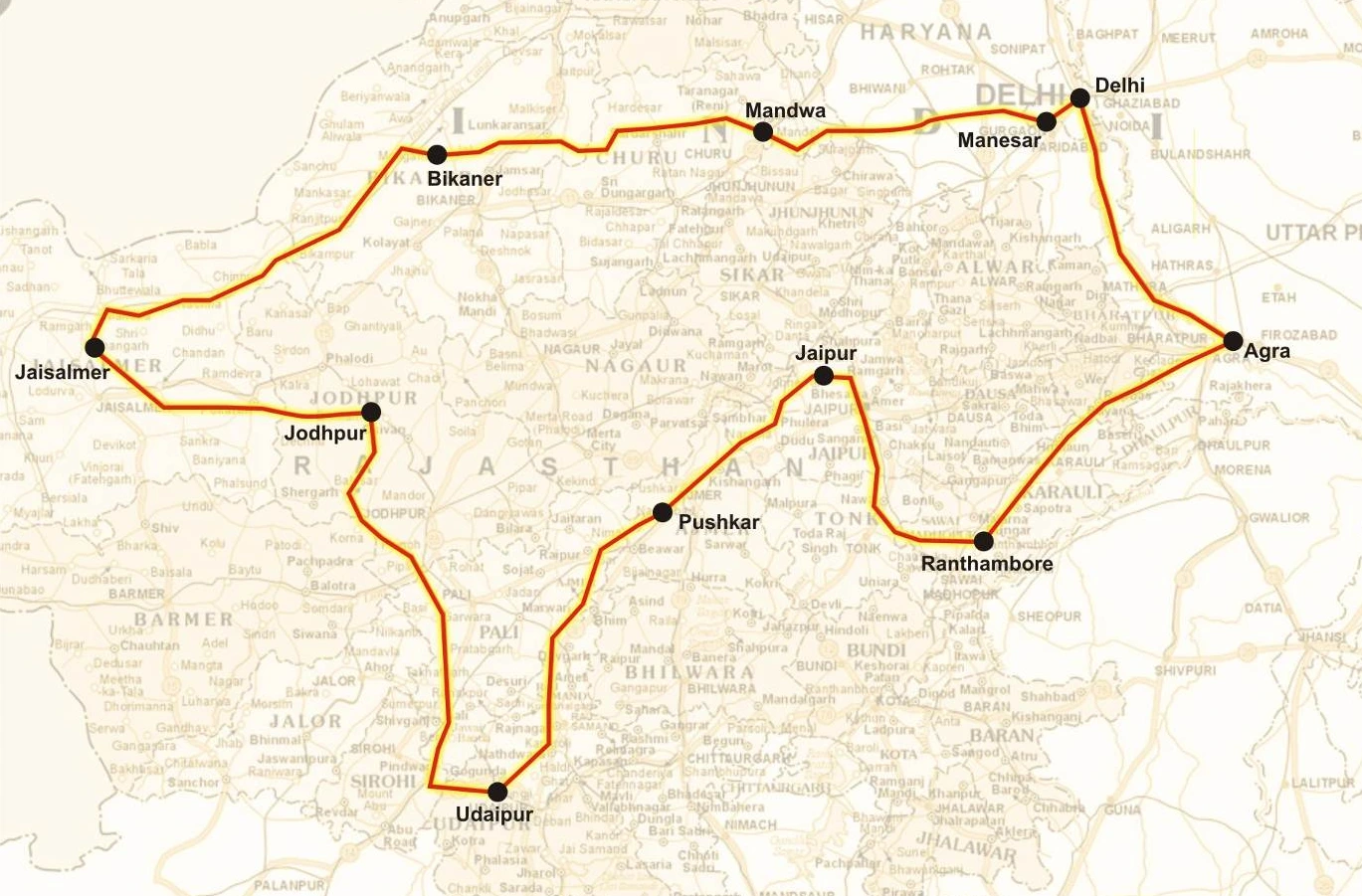
All pricing of tours are based on seasonality & subject to availability





